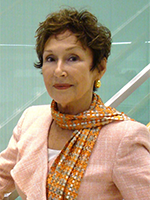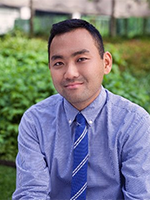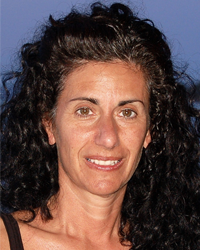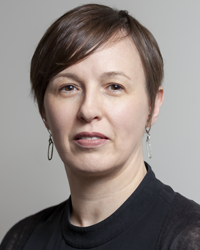More Americans than ever before will live to 100 in coming years, with the number of those ages 100 or older projected to more than quadruple by 2054. Within a decade, older adults will outnumber children for the first time in U.S. history. As our population ages, many more Americans will likely be unable to live independently.
Who will care for our rapidly aging population? We will need many more care workers. Overwhelmingly, they will be migrants. The agriculture and construction sectors have made clear that President Trump’s immigration policies threaten an essential workforce. However, there has been near silence on elder care. The President’s hardline stance on immigration ignores the reality of an older population and the desperate need for workers to care for them.
The implications of this ticking demographic bomb are clear. Many Americans with relatives in nursing homes learned first-hand, during the COVID-19 pandemic, that understaffed nursing homes can have deadly consequences. Approximately 15% of people who died from COVID complications were nursing home residents.
In the popular imagination, elder care is now synonymous with institutional care. However, most older Americans do not live in nursing homes. Nor do elder-care experts want them to live in nursing homes. The disastrous impact of COVID in nursing homes underlined the need for more sustainable elder care, particularly in-home elder care. Among experts, there is an increasing emphasis on “aging in place,” on non-institutional solutions to elder care, with a focus on keeping elders in their homes and communities.
For older adults to age in place, we will still need workers, particularly home health aides. The Bureau of Labor Statistics predicts that by 2033 the United States will need approximately 820,500 more new home health aides and personal care workers—a growth rate of 21% relative to 2023. As is the case in the agriculture and construction sections, it is simply not possible to find these workers among U.S. residents. For instance, migrants currently provide nearly a third of the direct long-term care workforce (as nursing assistants, home health aides, and personal care aides). The bottom line: we will need more migrants. To facilitate more migrant workers in this area, we need a specialized elder-care visa program.
‘Migrants right now provide nearly a third of the direct care workforce.’
Compared to their peers in the agriculture, construction, tourism, and food-processing sectors, migrant workers in elder care are the least-studied population. While this population is largely invisible in the United States (perhaps because so many of them live in the homes of their older employers and are paid in cash), the same is not true in their countries of origin. The home health aide population regularly sends money to their families, providing a steady pool of valuable hard currency to their communities of origin.
For example, many home health aides originate from Caribbean countries. These remittances have become indispensable to the foreign exchange reserves of Caribbean central banks. Their sizable earnings provide a clue to the unique importance of this population—not only to their countries of origin but also to older Americans. It is not an exaggeration to say that in-home elder care in Florida and New York would collapse if Caribbean migrant workers disappeared.
We must confront the reality of a shadow system of undocumented workers in home care and design a system to replace it. The term undocumented refers to those who have never received a visa and those who receive visitor visas that do not authorize them to work, but who work anyway.
There is a growing reliance on H-2A and H-2B, or temporary, visas in the United States in recent decades. These programs recruit workers for the agriculture, tourism, and construction sectors. The important word here is temporary. Difficulties in negotiating compromises on immigration reform reflect the fact that many Americans are entirely unconvinced that the government can design, and enforce, a credible program in which temporary workers will in fact be temporary.
Most Americans do not know that the government already administers a temporary guest worker visa program for the agriculture and tourism sectors (farm workers and hotel workers). These guest worker programs appear to be remarkably successful on a variety of indices, including, importantly, visa overstay rates, which are very low.
Guest workers come for a few months and when they have completed their term of work, they return home. Thus, they are temporary. The challenge is that the agricultural and tourism sectors receive only a small proportion of the workers they need. The visa numbers are too small and too many people who want to come have no access.
These programs provide a model for a specialized elder-care visa program. Given the large numbers of needed workers, we need a program that is scalable, but still credible as a temporary program. To build broad-based political support for a temporary worker elder-care program, Congress will have to design a program that accomplishes three goals. First, the program must screen for workers who are competent caregivers. Second, the program must identify only those who are seeking temporary work. Third, the program must have a credible way to ensure that visa recipients return to their countries of origin when their temporary visas expire.
The bottom line: we can no longer sidestep hard questions about how to design a large-scale program that will admit large numbers of migrants who comply with the terms of their visas. Perhaps the aging of the population and the inevitable need for care workers will force policymakers to confront these questions.
Thankfully, we have a workable model for a specialized elder-care visa program, and for the immigration institutions needed to support it. My region of origin—the Caribbean—supplies many home care aides in two states with disproportionate representation of older adults, Florida and New York. There are clear lessons from the many Caribbean home health aides who work and travel, which should be incorporated when designing a specialized elder-care visa program.
‘We need an elder-care program that is scalable, but still credible as a temporary program.’
Many current Caribbean home health aides have visitors’ visas. These visitors’ visas do not permit them to work. However, because the visa permits a maximum 6-month stay after entry, they also understand that they are unlikely to be penalized for working—as long as they do not remain in the United States for longer than 6 months on any one visit. If they violate this rule, the United States is unlikely to renew their visas.
Thus, they have devised a system to comply with the 6-month rule—job splitting. This is a pattern whereby home health aides split their work between two workers, each of whom works for 6 months per year before turning over the job to a companion care worker for the remaining 6 months. Each worker is temporary. In any given year, they spend no more than 6 months in the United States, before returning to their country of origin and then coming back the following year.
The workers comply with the 6-month rule because they feel secure in the knowledge that they will be permitted to come back the following year. This pattern typically continues over several years. An upside of job splitting is that it leads to continuity of care because the elders they care for have the same two caregivers over several years. This is important; elder-care experts prioritize continuity of care.
Most of these workers have been coming to the United States for years. They provide a critical service, return to their country of origin, and come again the next year. That this system has persisted for so long for workers who care for our grandparents speaks volumes about the long-term likelihood of its persistence. Indeed, most of these workers would likely have been favorably screened for temporary elder-care visas if such visas existed.
We should urgently devise a system that permits what many elder-care migrant workers are already doing. The key is that they need to be rewarded for compliance with their visa terms. If they can work in the United States for a few months per year across several years, they have every incentive to comply.
A system in which elder-care aides work “under the table” is unsustainable. People who are not properly documented are uniquely vulnerable to exploitation. Moreover, without these workers, we face the real prospect of skyrocketing elder-care costs. Elder care places unique burdens on families, particularly members of the “sandwich generation,” who also have young children.
A specialized elder-care visa program would address labor shortages, provide legal status for workers, and provide stability for workers and families with older relatives. Workers and families can be secure in the knowledge that those who abide by their visa terms will be available as caregivers for several months in any one year, with a near-certain renewal to return in future years. If the rules are clear and people abide by the rules, migrant caregivers working with families have every incentive to work out their own “job-splitting” arrangements.
Again and again, we must ask ourselves: how can our immigration institutions do what Americans want them to do—screen for migrants who abide by the rules of their visas and sanction those who do not? We need to confront the reality of what Americans want. A specialized elder-care visa program will provide us with the opportunity to show that the government can credibly scale a visa program to meet these goals, while meeting an urgent policy goal of providing a desperately needed population of workers to care for older Americans.
Eleanor Brown, JD, is a professor at Fordham University and an affiliated faculty member at the Rock Ethics Institute of Penn State. Previously she chaired the Jamaica Trade Board and was appointed by Andrew Holness, the Jamaican prime minister, to the CARICOM Commission. Brown was a Rhodes scholar at Oxford, earned her JD from Yale and was a Reginald Lewis fellow at Harvard. She is a contributor to Law And The 100-Year Life, which will publish in May.
Photo credit: Shutterstock/SeventyFour









